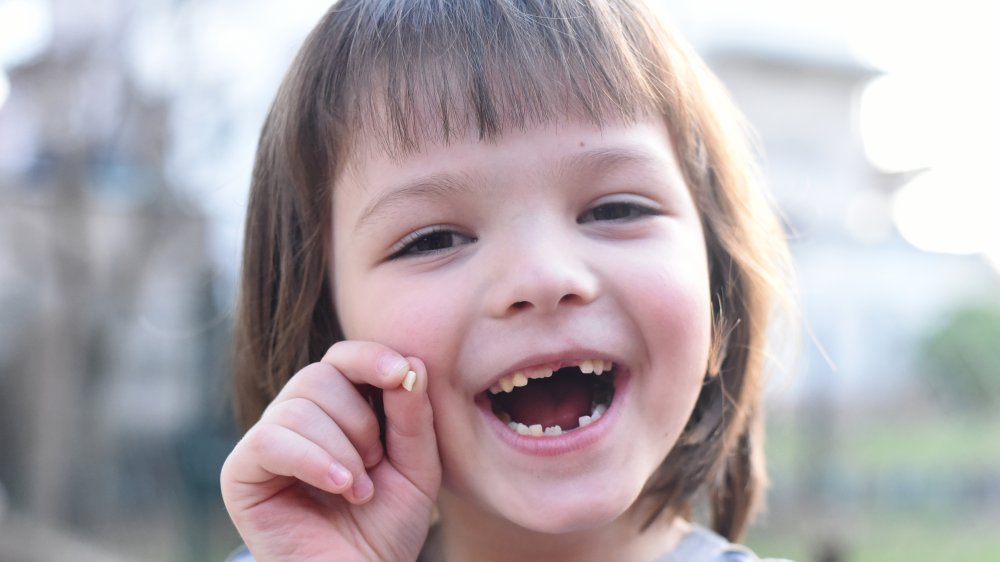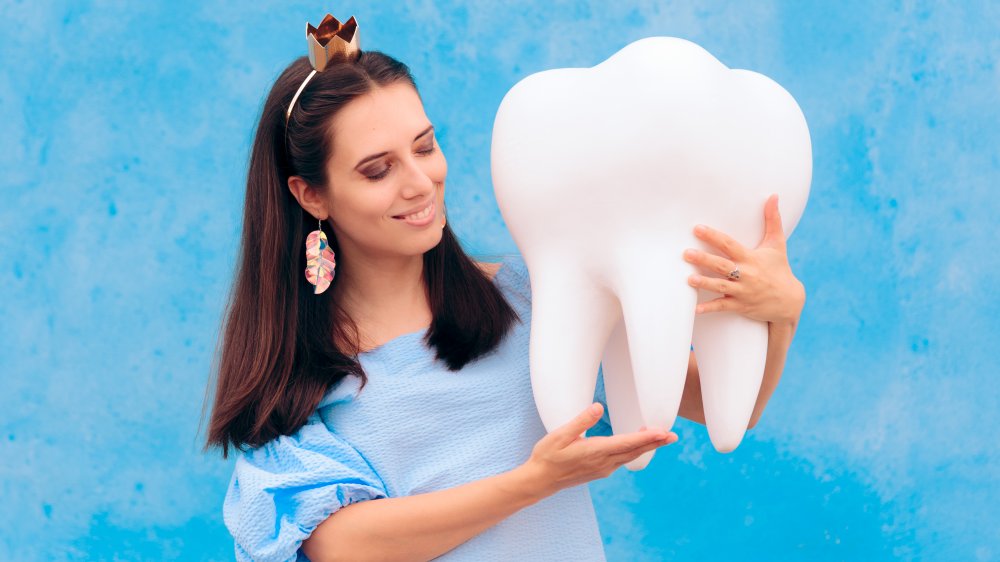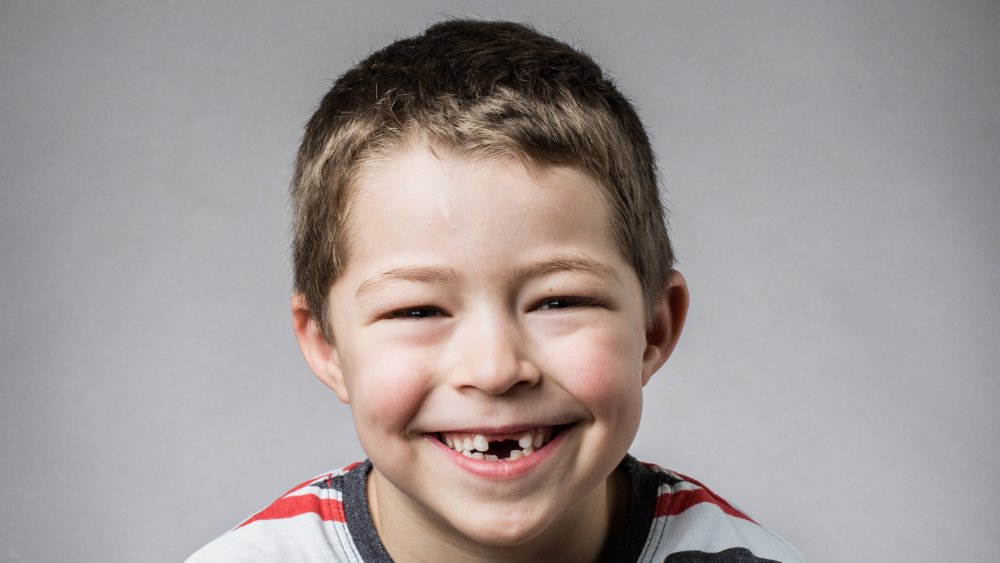The Surprising Origins Of The Tooth Fairy
It kind of depends on geography — the Tooth Fairy payout, that is. According to a 2019 poll conducted by Ask the Dentist and cited by USA Today, kids in Delaware have a more generous connection to the Tooth Fairy than, say, the kids in Wisconsin, averaging $4.46 and $2.74 per tooth, respectively. (Montana and Wyoming do pretty well, too, at $4.35 and $4.33 each.) According to Salon, the national average is $3.70/tooth.
You'd think there'd be some consistency, but just as trick-or-treaters discover that some houses are dishing out full-size Hershey bars and others are distributing rocks, so the Tooth Fairy rewards for baby teeth vary quite widely. Perhaps that's because the TF doesn't quite have it down yet. It's a relatively recent addition to the pantheon of magical creatures enhancing the experience of childhood.
Mind you, there have been traditions regarding the use and/or disposal of baby teeth in many cultures for many years. The Vikings, for instance, would wear their children's teeth as protective talismans in battle, reports Mental Floss. As far back as the 13th Century CE, Scandinavian children would receive a "tand-fé" — a "tooth fee" — for losing a tooth, though there doesn't seem to be anything particularly fairy-like about the transaction.
The appearance of the Tooth Fairy varies by household
Different countries had different ways of disposing of baby teeth, which might or might not have superstition involved. Ancient Origins relates that there's really no "direct parallel" between the Tooth Fairy and European folklore. In England, baby teeth would be burned, else the individual's spirit would spend the afterlife searching for them. In the United States, the Tooth Fairy is a relatively recent phenomenon. There are hints in European folklore, but in the U.S. the story didn't really take off until post-World War II. There were mentions before that, some as early as the beginning of the 20th Century. The Fairy's first appearance in print is in an eight-page playlet for children, published in 1927 by Esther Watkins Arnold, and the oldest references in oral (so to speak) tradition "date her to approximately the turn of the 20th century," writes Salon. The Tooth Fairy doesn't even get an encyclopedia entry until 1979, says Forbes.
Is there Tooth Fairy canon? Not really. There have been Tooth Fairy movies, starring Kirstie Alley, Dwayne "The Rock" Johnson, and Larry the Cable Guy, as well as supporting roles in the Santa Clause movies.
The Tooth Fairy helps make things a little less scary
The closest thing would be the research of Dr. Rosemary Wells (not to be confused with the children's author of Noisy Nora and others), a professor of scientific writing at Northwestern University Dental School who, like many of us, was flummoxed about the origins of this seemingly pervasive, yet elusive, myth. Dr. Wells published a series of articles, tabulated surveys, and in time opened a Tooth Fairy museum in her home. (Alas, it was liquidated upon the death of the good doctor in 2000.) It would be logical to ask: Was Dr. Wells actually the Tooth Fairy? Hiding, as it were, in plain sight? Not according to her business cards, which utilized the title, "Tooth Fairy Consultant."
It was Dr. Wells's contention that the Tooth Fairy mythos helps ease a potentially traumatizing biological transition for small children — '"Children are frightened when they are about to lose a tooth, and the tooth fairy makes the child feel better," she told the Chicago Tribune in 1991. Unlike the appearance of, say, Santa, the Fairy is male or female, old or young, or even human-ish, depending on the individual family's ritual, including arrival and departure times and level of gift, monetary or otherwise. As for dentists themselves, Salon reported in 2014 that the Chicago Dental Society's position was, "We have no position on the Tooth Fairy."


